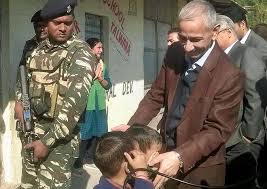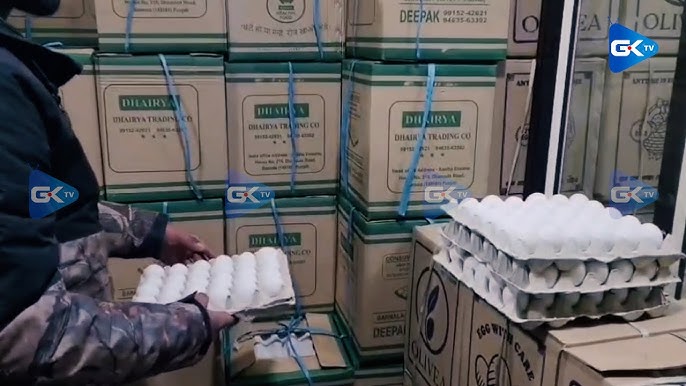The government appears to be cautiously optimistic about the situation in Kashmir, but there are worrying portents on the ground.
The Centre’s Representative for talks in Kashmir, Dineshwar Sharma, says he is `hopeful of a peaceful summer this year.’ He bases that hope on his ‘faith in the people of Jammu & Kashmir, particularly the youth,’ adding that ‘they understand that all their problems can be addressed only when there is peace.’
That sort of hope needs to be tempered with caution, however. To be sure, the government’s statistics of violence, agitations (including stone-pelting), and of the number of militants in the field, indicate either a decline or a relatively slow rise through these past few winter months. But that is only to be expected. Winter has always marked a decrease in violence, and even more so of street demonstrations.
In fact, the previous winter was even more encouraging from the government’s viewpoint. Many in the corridors of power had become convinced that the uprising which followed the killing of militant commander Burhan Wani had died down, and they could rest relatively easy.
That turned out to be a false hope. Neither the politicians and bureaucrats in government, nor the intelligence agencies, apparently had much idea of just how much violence would erupt during by-elections for two Lok Sabha seats in the second week of April 2017 —when winter was still intense.
The by-election for the Anantnag seat had to be cancelled after eight persons were killed in the by-election for the Srinagar seat on 9 April last year. From all indications, there would have been much violence in south Kashmir (the area of the Anantnag seat) if the by-election had been held three days later, as had been scheduled.
The fact that Tasaduq Mufti has been nominated to the state assembly and accommodated as a minister indicates that the state government may have given up on being able to hold that by-election in the near future. Tasaduq, who is the brother of Chief Minister Mehbooba Mufti, was the ruling party’s candidate for the Anantnag seat in the Lok Sabha.
Another indicator is that the state government quietly shelved the panchayat polls, which it had slated for 15 February. The state police is said to have made it clear that it would not be able to protect all the elected panches (village representatives).
Aspects of instability
Kashmir is currently unstable from at least four perspectives. The most obvious is the shelling on the Line of Control. The armies of India and Pakistan have been hitting each other, and villages in that belt, with heavy mortar fire through much of the winter.
The second disturbing trend is that a large numbers of militants from Pakistan, and possibly other countries too, are in the Valley, working closely with local militants. There seems to be a smooth synergy between various groups, such as the Hizbul Mujahideen, Lashkar-e-Toiba, Jaish-e-Mohammed, and several others.
The third troubling factor is that, not only has the number of local militants increased, younger boys, including children and even infants, are becoming radicalised.
The fourth disturbing trend is the increased friction between the major coalition partners in the state government. Their differences over the killing of three persons in army firing in Shopian a few weeks ago, and over investigations into the rape and murder of an eight-year old girl in Kathua are glaring points of disagreement.
Unlike earlier points of contention between the coalition partners, differences on these issues have been publicly visible. These issues have divided society in the state, along regional and religious fault-lines. In the Kashmir Valley, that leads to more support for militancy.
Wide range of inputs
Given these factors, Dineshwar Sharma’s hopefulness indicates a welcome buoyancy, based on ground-level inputs. Since the beginning of winter, he has visited the Valley several times, and met a large number of groups and individuals from across the spectrum.
He has also met administrators, police and intelligence officers. As he has earlier been the Director of the Intelligence Bureau, he is no doubt regularly briefed by police and intelligence officers in charge of handling the situation in the state.




